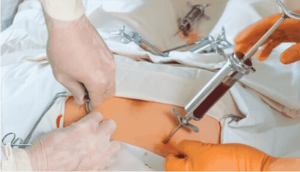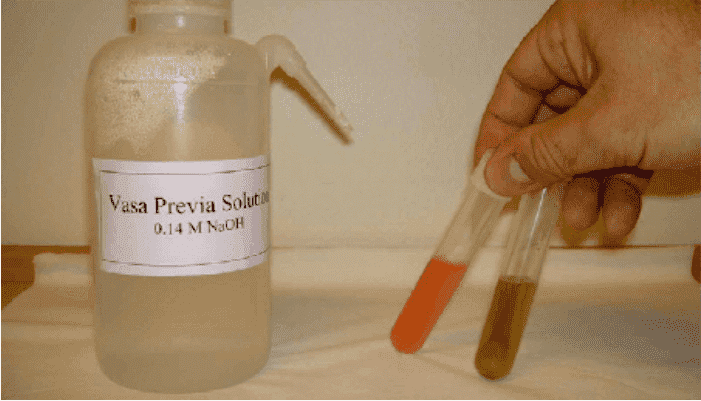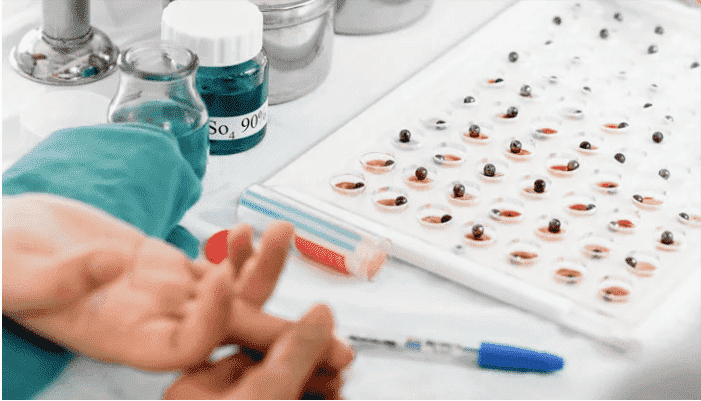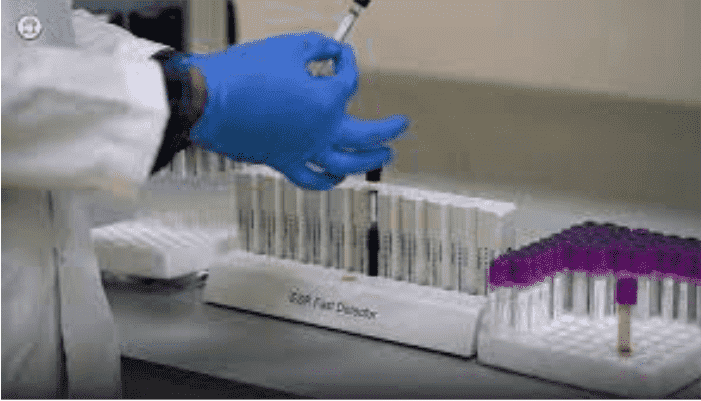Bone Marrow Examination: Aspirate and Biopsy Explained for Diagnostic Use
Synonyms
- Bone Marrow Aspirate
- Bone Marrow Biopsy
Common Stains Used
- Hematoxylin & Eosin (H&E) Stain
- Wright’s Stain
- Iron Stain
- Special histochemistry as needed
Abstract
Bone marrow samples are collected either as an aspirate (liquid marrow) or a core biopsy (solid marrow tissue). These are typically taken from the posterior iliac spine using a syringe or biopsy needle (e.g., Jamshidi needle). Once collected, they can be stained for microscopic evaluation, sent for flow cytometry, molecular testing, culture, or chromosome analysis depending on clinical need. Bone marrow study plays a vital role in the diagnosis and monitoring of hematologic and systemic disorders.
Patient Care / Preparation
- Physician explains the procedure to the patient.
- Local anesthesia is used under aseptic conditions.
- Anxiety reduction is recommended prior to the procedure.
Aftercare
Keep the biopsy site dry and clean for at least 24 hours after the procedure.
Specimen
- Bone Marrow Aspirate (liquid)
- Bone Marrow Biopsy (core tissue)
Container
- Coverslips for smear preparation at bedside
- Biopsy/clot in fixative (Formalin or Zenker’s solution)
Special Instructions
Bone marrow studies must be scheduled in advance to allow for appropriate culture media, fixatives, and transport requirements. Inform the lab if special tests (e.g., flow cytometry, FISH, cytogenetics) are required.
Reference Range
Interpretation is performed by a hematologist, oncologist, and/or pathologist based on clinical context.
Clinical Use
- Evaluate bone marrow morphology
- Assess erythropoiesis, myelopoiesis, and megakaryocytes
- Determine M:E ratio (myeloid:erythroid)
- Monitor neoplasms like leukemia, myeloma, and lymphomas
- Assess iron stores in bone marrow
- Investigate pyrexia of unknown origin (e.g., histoplasmosis, TB)
For isolated iron evaluation, serum ferritin, TIBC, serum iron, and CBC may substitute marrow analysis.
Limitations
- Normal marrow at one site does not exclude disease at another site.
- Adequate biopsy size ensures accuracy; aspiration does not affect cellularity estimation if biopsy follows.
Contraindications
- Severe bleeding disorders (especially at sternal site)
- Presence of thoracic aortic aneurysm
Methodology
- Preferred site: Posterior superior iliac spine
- Other sites: Anterior iliac crest, sternum (aspiration only), vertebral spinous process
- Pediatric site: Anterior tibia
- Needles: Jamshidi needle commonly used
Additional Information
- Bone marrow biopsy adds diagnostic value, especially in packed marrow or infiltrative disease.
- Hairy cell leukemia and some cancers always involve bone marrow.
- FAB (French-American-British) classification is used for acute leukemia classification.
- Bone marrow cultures can aid in the diagnosis of infections like histoplasmosis or tuberculosis.
References
- Bartl R, Frisch B, Wilmanns W. Eur J Haematol. 1993;50(1):41-52.
- Bloomfield CD, Brunning RD. Ann Intern Med. 1985;103:614-5.
- Hyun BH, et al. Color Atlas of Clinical Hematology. Igaku-Shoin, 1986.
- Karcher DS, Frost AR. Am J Clin Pathol. 1991;95(1):63-71.
- Kass L. Bone Marrow Interpretation. 2nd ed. JB Lippincott Co, 1985.
- Paulman PM. Am Fam Physician. 1989;40(6):85-9.
- Wittels B. Surgical Pathology of Bone Marrow. WB Saunders, 1985.
- Jacobs et al. Laboratory Test Handbook. Lexi-Comp Inc, 1994.



